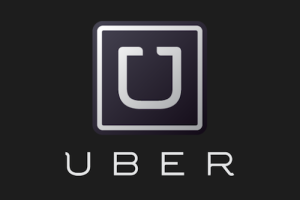My Ridesharing Experience As A Driver
My first time mentioning ride sharing companies Lyft & Uber on this blog was in a May 2014 poll. This was largely due to the fact I’d never used either. In January 2018 that changed when it was just too cold for me to take my wheelchair/transit to a doctor’s appointment. That cold January day I tried Lyft for the very first time. After a good experience both directions I decided I’d sign up as a driver.
 My husband has our car most of the time while he’s at work, but there are times I have the car — at least access to it. After my first trip as a driver I also signed up to drive for the better-known Uber. I then got my husband to sign up for both, he could do it on the way home if he finished with a client early.
My husband has our car most of the time while he’s at work, but there are times I have the car — at least access to it. After my first trip as a driver I also signed up to drive for the better-known Uber. I then got my husband to sign up for both, he could do it on the way home if he finished with a client early.
Though I’m technically still a driver for both, I haven’t done so since March 2018. Couple of reasons why. First, we bought a newer car that was larger and more high tech than I’d been used to. When driving it initially I needed to get used to it without any distractions. Second, my vision was getting so bad that I often couldn’t see to drive when the car was available due to glare from the sun.
In August & October 2018 I had cataracts surgery on my eyes, in November I got new prescription glasses for distance. See My Vision Is Better Than It Was On Sunday!
Earlier this week I completed and filed our 2018 taxes, so I’ve recently downloaded and reviewed our summary reports. I gave a grand total of 8 rides in about a 10 week period, 3 via Lyft and 5 via Uber. Most drivers, including my husband, will have both Lyft & Uber on simultaneously until they get a ride, immediately shutting down the other. I could never bring myself to do that. The mental stress of just one app open was enough for me.
Still, it was a great experience. I met some nice people, both locals and tourists. I got to experience the ride sharing industry from within, albeit limited. One was my eight was perfect. I was driving to ALDI to go grocery shopping. I picked up a guy at Firestone and took him to his house, which was on the way to the ALDI I wanted to visit. In 2018 my husband had a total of 177 trips; 58 with Lyft & 119 with Uber.
Back to taxes, both apps track the miles driven while on trips. This is used for tax purposes to account for vehicle expenses (fuel, wear & tear, insurance, maintenance, depreciation, etc). Though we both came out ahead, it wasn’t as much as I’d hoped it would be. We’re going to contribute to the high turnover among Lyft/Uber drivers.
My conclusion on my first time using ride sharing is the same as it is today — this is expensive way to get around. My guess is that it’s on par with a taxicab, but that’s just a guess. Both are far pricier than transit.
In the last few years there have been a ton of articles about how ride sharing reduces car trips…or increases them. How it cannibalizes transit systems…or compliments them. I recently even saw an article about college kids taking Lyft/Uber instead of walking across campus. Compared to a taxicab I do prefer ride sharing — no pressure from the driver to pay with cash instead of plastic.
I’ll keep watching the ride sharing industry and how it is potentially disrupting others, I like that I’ve got experience as a rider & driver.
— Steve Patterson